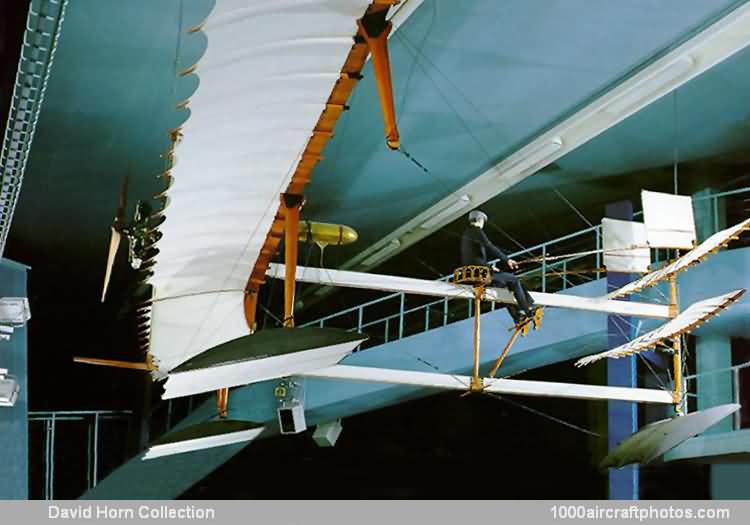11/15/2014. Remarks by Johan Visschedijk: "Henri Fabre was born in 1882 in a rich family of ship owners of Marseille, France. An engineer from the l'Ecole Supérieure d'Électricité (Electric High School, presently known as Supélec), at young age Fabre wanted to build an airplane capable of taking off and landing on water, for this, his father awarded him 100,000 Francs, a fortune at the time. Methodical of mind, Fabre studied in turn the wing by assessing, on the Etang de Berre, gliders pulled by his yacht "The Rise" and mounted propellers on his 14 hp Renault car of 1903. Finally he tried a catamaran with flat bottom floats.
Early in 1909 he built a an aircraft with three floats, powered by an Anzani engine, underpowered it failed to take off but proved the float concept. His fortune being spent, a friend of his father, Charles Gavoty offered him a 50 hp Gnome rotary engine in January 1910. Mounted on the rear of the tri-float monoplane, the Gnome turned out to be the ultimate decisive part of the seaplane and on March 28, 1910, Henri Fabre took off and landed several times on the Etang de Berre. This success crowned four years of systematic studies, the first seaplane in history was flown by a man who had never learned to fly!
After some spectacular hard landings, Fabre built an improved second aircraft for the licensed pilot Jean Bécue, however, Bécue had little more luck than Fabre and destroyed the new machine during the boats races of Monaco in April 1911. Subsequently Fabre sold many floats to the most of the famous manufacturers of the era and during WW I the Fabre shipyards produced FBA seaplanes."
